UP TO THE MINUTE
The Rise of Fluid-applied Roofing - PODCAST TRANSCRIPT
February 10, 2024 at 12:00 p.m.Editor's note: The following is the transcript of a live interview with Chris Kuykendall from Mule-Hide. You can read the transcript below, listen to the podcast or watch the webinar.
Heidi J Ellsworth: And good morning. My name is Heidi Ellsworth, and this is Coatings Talk from Coatings Coffee Shop. We are so excited to bring you this episode today, this webinar is going to go over the rise of fluid applied roofing. This is a great, great conversation. I'm really excited for us to share this.
Before we get started, let's go ahead and start with a few housekeeping. First of all, this is being recorded, and it will be available on demand within the next 24 hours. Be sure to share it with your company, with your friends. This is something that you can really use in your business.
So we also have the chat open and I already saw Joe, good morning, Joe, put his information and where he is from in the chat. Please let us know you're here, let us know where you're from and throughout the webinar any comments.
So I am again very honored to introduce the rise of fluid applied roofing and our guest, Chris Kuykendall. We've been talking, I've been hearing everything he says, he's a trainer. I am so excited to have him on the show. Chris, welcome.
Chris Kuykendall: Hi everybody, grateful to be here.
Heidi J Ellsworth: That's awesome. Chris, can you introduce yourself, tell us a little bit about you and Mule-Hide.
Chris Kuykendall: Sure. Well, I started out in the industry in residential roofing and remodels and things like that, and ultimately decided that a lot of the emotion that comes with being in residential roofing, I wasn't quite suited for working maybe with homeowners, and I preferred to work on buildings a bit better. I liked how black and white it was, there are problems to solve and go solve them and you can get paid. So I gravitated toward that.
And then I found fluid applied roofing back when SEBS was a big deal. And from there, just the rest is history. I was a contractor applicator. And then from there I met a lot of the folks at Mule-Hide and they brought me into the Mule-Hide family. I was their fluid applied manager there for a bit. And now I work in Texas with contractors and I do trainings for all types of commercial roofing, including fluid applied in the state of Texas. So honored to be here, hopefully I can bring some value to everybody.
Heidi J Ellsworth: I know it's going to be. Chris, thank you so much for being on this Coatings Talk. This is great. So let's get started. I do want to remind everyone, I know I said it once before, but the chat is open, I'm seeing some great information coming through. Please let us know who you are, where you're from and let us know too, commercial, residential or both. It's always great to hear what kind of business you're in. Also, please make comments and let us know, do you have questions, comments, thoughts, this is open and we want to hear what it's all about. So let's get started.
Chris, let's start big picture, let's start with the overall of the fluid applied roofing industry, what's it about?
Chris Kuykendall: Yeah, yeah, so just give a real quick flyover of where we're going to be headed in this presentation and then I'll answer your question. We'll look at the process of restoring a roof, we will talk about evaluating a roof. Not every commercial roof is a good candidate for coating, so we'll talk about that. We'll get into products a little bit. We'll talk specifications and how to think through that part of fluid applied restoration. And then I'll share a lot of application, just experience and things like that, things that I've learned. And hopefully you'll leave knowing that you don't have to invest in a ton of very, very costly equipment to get started and to get really good at this restoration. So that's that in an overview.
But okay, to answer your question, Heidi, in general, 30,000 feet, what is fluid applied roofing? Well, I think it's growing. The numbers tell us across all manufacturers that it's growing as a product, as a service offering in the industry. And I think that that's happening. Insurance companies are tightening up. When we have dips in the economy, you'll see coatings continue to rise when the cost of doing business continues to rise. Contractors are looking for ways that they can expand their service offerings. So fluid applied is trending upward, that's not just a Mule-Hide reality, that's true across, like I said, a lot of different manufacturers. And you're seeing it not just from the contractor/insurance perspective, but building owners are now pulling that sale through. They're asking for it, "Hey, I've read about this, I've heard about this, I don't want a re-roof bid, I'd like a coating bid," and things like that. So, it's really a holistic growth across manufacturing, across the actual building owners, property management and even some insurance carriers are starting to look at these.
Heidi J Ellsworth: Excellent, excellent. And we see that same thing here on the Coffee Shops. We see a huge rise in fluid applied and just really how it's solving problems. We have a question that I think we're going to really be answering later on, but I want to bring it up because I think it is a great question from Lily. Hello, Lily. Was fluid applied roofing impacted by commercial roof de-stocking, and I'm assuming that's the material shortage, Lily, why or why not? So maybe this is a good time to talk about that. Did you see some impact with the material shortages?
Chris Kuykendall: Absolutely. When it was hard to get TPO, when it was hard to get modified and things like that, especially when it was difficult to get single-ply stuff, TPO and PVC and things like that, you saw a sharp rise in these products. You saw contractors going, "All right, I have to offer something different here or I'm not going to work, I'm going to have to let people go, I'm going to have to scale my business down, I'm going to have to," et cetera, fill in the blank. So contractors that were innovative and okay with being flexible, they found a tremendous opportunity to swoop in and get work for that issue. So that's a great point, Lily.
Heidi J Ellsworth: Yeah, I think we saw it, everyone was looking for solutions, and they were looking outside the box, and I think it really ... people used it and thought, this is great, we should keep going. So let's talk a little bit about that, about the benefits of liquid applied systems and benefits of restoration, of roof restoration.
Chris Kuykendall: Yeah, yeah. So of course everybody knows that it's less expensive, I don't like using the word cheap. There are cheap coating products out there, but they're not all cheap. Some of them are just really ... they're fantastic products that have been designed and engineered by world-class chemists to perform in harsh conditions. So I don't like saying that the coating is the cheap alternative. But it is less expensive, because you're not having to tear-off, you're not having to build up the current coat.
So typically, and this will be for the contractors out there, typically, and this is just a general rule because no two situations are the same it seems, but generally speaking, especially with silicone, a silicone coating needs to be somewhere between 40% to 50% less expensive for that building owner than a full tear-off and building back up with a re-roof to current coat.
And the smaller that margin gets, the less the coating makes sense. If there are some other things happening, I've got a lot of wet insulation I've got to cut out and all that. We'll get to that a little bit later.
But typically if, and I'm just going to use flat numbers, I know we have people from all over the country here, but typically if a full tear-off and re-roof is X amount, then the coating number needs to be 50% less than X typically. Now that can fluctuate a bit. And if you have questions, if you have any specific roofs where you're like, "Hey, this is what the re-roof costs, but this is what's going on in the roof." Then, Heidi, if you think it's appropriate, I'll try to answer that. If not, they can reach out to me afterwards. So that's one, savings versus full replacement.
The warranty coverage. So the most common TPO warranty out there is a 20-year system warranty. Well, at Mule-Hide for example, and I know this is true about other manufacturers, with silicone, we'll offer up to a 20-year system warranty if proper specs are followed. So the warranty coverage has gotten comparable, the products have evolved to where we can confidently stand behind them for that amount of time.
But the environmental impact, we're not having to tear-off and put a bunch of stuff into landfills. And on top of that, we are allowing that building to perform better from an energy perspective.
And then finally, the insurance industry, it seems that the insurance industry is tightening up a bit. It is maybe more challenging in certain regions. So if you are one of those contractors that's prepared to maybe do your best to work with an insurance carrier to come to a solution that works for the building owner, that puts that roof in a warranted condition, that's still profitable for you as a contractor, maybe that puts you in a position of differentiation to the competition. Because you're able to walk that tightrope that delivers value and you're able to get the insurance company to work with that building owner as well.
So those are some of the overview benefits. And I know I went right through a lot of that, there's a lot to unpack there.
Heidi J Ellsworth: No, but I think that's, as you're looking at it, really there is so much going on environmentally with really can we restore, can we on other sides remodel, can we do things that are going to save the landfills? And I think that is really, as you're looking at this, when it's comparable, when you're talking about cost savings, when you're talking about warranties and then the insurance industry, it's just we're trying to get through that.
But I think I want to go back to that environmental, because there's a lot of people who refer to this as sunscreen of the roof, I mean, it has reflectivity, the liquid applied has really met a lot of these things. So let's talk just a little bit about that and about environmentally how this is changing things for the industry?
Chris Kuykendall: Sure. Yeah. I mean, we are, as an industry, continuing to trend toward renewable, more efficient. And some folks push back against this a little bit, but I think we're all in this webinar because we're looking for ways to become more profitable, to become better professionals. So we're not doing this for the practice.
And the reality is, I use this example in my trainings, the more electric cars we see on the road, the more you're going to continue to see a product like a fluid applied restoration continue to gain prominence. Because what that is communicating to us as a society, whether I agree with it or not, what I see is industries trending toward more renewable. And a coating is one of those renewable ... You can get, for instance, you can get to the end of a warranty term with a coating and go re-coat it. You can't do that with certain types of roofing products. It's once they've reached the end of their service life, they're done and they do have to be torn off and gotten rid of and put in a landfill.
So when we say sunscreen for the roof, we're also talking about, when we convert from, say, a black roof to, say, a white roof, we're able to reduce the energy demand on that, we're not now absorbing heat, we're getting it away from the building.
And I remember someone saying that it's like putting the building to sleep a bit. It's calming it down. Whereas before, a lot of the HVAC systems, when we have these dark black roofs, they're having to work really, really hard. And when we can start getting that heat away from the building, it's like we're calming that building down, we're putting it to sleep. And not only from an energy perspective and a reduction of that peak energy demand, but also just the movement of the building, the movement of the roof. When we're able to stabilize that surface temperature, we're able to reduce some of the effects of movement as well.
Heidi J Ellsworth: Yeah. Wow. And your next point of conversion from black roof to white, we have a really good question that just came in in the Q&A that I think fits right in here, Chris. And that is in certain climate zones, manufacturers are recommending not using white membranes in the colder climates, do you have black colored coatings in development or maybe you already know, how is that working?
Chris Kuykendall: Yeah, fantastic, thank you for pointing that out. I think that there is a lot of wisdom in that and a lot of best practice in what you're saying. And yes, for instance, for us, both our acrylic and silicone offerings come in five standard colors. So black is one of those standard colors, so we have black, tan, dark tan, gray, white, things like that. And I think that's generally true across most of the reputable manufacturers out there. But great question. And for us, black is one of those standard colors.
Heidi J Ellsworth: And really working with your roof consultants, your building owners, your architects in those areas to really understand, I mean, that is a great question, what makes the most sense for that building and for that roof?
Chris Kuykendall: Yeah. And I think that on a webinar that's nationwide like this, we do have to just reinforce that the fluid applied restoration isn't the wild west, we still have to operate by industry best practices for commercial roofing. We still have to abide by local municipalities' codes and things like that. So I'm glad that you bring that up. And regionally, certain, say, colors and things like that make better sense than in other regions.
For instance, where I'm at in Texas, the summers here are brutal, for us to have a black roof is just problematic, not only from an energy perspective, but a service life. The UV just beats them to death. But I understand where you're dealing with, say, snow load and things like that in certain parts of the country, we don't want snow up there not melting, we need some of that off of the roof. So totally get that.
Heidi J Ellsworth: Yeah, it's snowing right now, there you go, outside. So, let's talk a little bit about carbon footprint because it's a buzzword and I think it's important, but I'd love to hear how you see liquid applied roofing, how does that fit in with the carbon footprint?
Chris Kuykendall: I want to be clear here, I'm a contractor minded person first, I'm not a professional, I'm certainly not a scientist and things like that, so there are people way more qualified to talk about the actual nuts and bolts and numerical impacts of the carbon footprint.
But the two biggest ways where I see fluid applied roofing coming into this conversation is the reduction of tear-off. We all know that when we ... roofing materials deposited into landfills are an issue, regardless of where you fall on this discussion, we all agree that tearing things off that don't need to be torn off is not what's best for us. It's not what's best for us as a society. It's not what's best for, in my opinion, it's not what's best for the environment either.
So when we're able to keep material out of landfills and we're able to get more service life out of a roof, so we're both reducing tear-off and we are reducing the need for energy, we're reducing HVAC, that reduces cost and that reduces that building's carbon footprint.
So when I think though, from a contractor perspective, one of the push-backs that I commonly get here when I start talking about trying to adapt from being a tear-off only mindset, one of the things that I get commonly here is, "Well, if I can't tear things off, how am I going to make any money?" Because, it's not true, but one of the common misconceptions is that this isn't a profitable way of doing things, that you have to tear-off to be profitable and successful in the commercial roofing industry. And none of the numbers support that at all. I know I got a little bit out of the carbon footprint.
Heidi J Ellsworth: No, it's good.
Chris Kuykendall: But this is typically one of those areas where I get that pushback is, "Well, I make a lot of money on tear-off." "Well, you also pay out a lot of money to tear-off as well." So anyway, we'll maybe touch that later.
Heidi J Ellsworth: Well, and we have some great questions here that goes right along with what we're talking about with solar and the environment, sustainability. But one of the questions was, what are the pros and cons, pros and cons, with solar panel systems in fluid applied?
Chris Kuykendall: So, depending on who you talk to in the industry, they almost can be problematic for one another. When you have, say, a fluid applied, a bright white coating that is reflecting UV away from a building, but then you have solar that is trying to accept and monetize and use that UV, they can almost work against one another. So I think that you have to be really smart in those situations. It's not that the two can't work together, but you do have to be smart and tailor-make a system, maybe to touch back on, I think her name was Lily, a question that she had had earlier, maybe it's a darker coating is best for that roof. You're able to avoid tear-off and continue to add service life and renew that roof. But maybe a bright white coating isn't ideal if that roof's also going to have solar on it.
But to touch though maybe a different part of that discussion. Solar also comes with maintenance, it comes with a ton of penetrations in the roof. So there needs to be a good plan there. The detach and reset of solar and the impact that that has on a commercial roof and things like that. So it's not that they can't work together, oftentimes they do, but you do have to have a good plan.
Heidi J Ellsworth: Perfect. And I think it depends, just like we said before, you need to work with people in your area, because it depends on the type of solar arrays that you have too.
Chris Kuykendall: And I'm not a solar expert, I do want to say that I'm not a solar expert.
Heidi J Ellsworth: So be sure to ask people in your area because it changes regionally as you go. Another question, and this one is from Lily, she said how many times can you perform restoration before you have to do a tear-off?
Chris Kuykendall: I don't think the industry knows the answer to that yet because fluid applied, though it's been around forever and the products have continued to evolve, I don't think that we know the answer to that yet. For instance, silicone with a 20-year warranty that was put on 10 years ago, 12 years ago that's still performing, to come back in five, six years and re-coat that. Well, how many times can you do that? I mean, if you're continuing to keep moisture out of that roofing system and the rest of the building envelope is also being maintained, I don't know the answer to that. But I can tell you that re-coating is a sustainable option. And I haven't heard of folks that have been successful in coatings say that, well, at the end of that warranty term for that coating, they went back out there and that roof now needed to be torn off. That's a great question, I don't know that there's an answer.
Heidi J Ellsworth: And they're finding that it can be re-coated again.
Chris Kuykendall: Of course, absolutely. Now keep in mind, we'll talk about this later, but keep in mind that once you go with a certain type of coating chemistry, you're locked into that coating chemistry as well because of compatibility and adhesion issues. But we'll talk on that later.
Heidi J Ellsworth: Okay, perfect. We have one more question that I think also fits right in here with what we're talking about. Can you elaborate on the CRRC certification program and how it might be helpful in selecting the proper coating color and emissivity for particular climate zones?
Chris Kuykendall: Yeah, those are great questions. I got, last summer, I got invited to go and share some of this information with the CRRC out in Vegas. And those are great folks because they're all way smarter than I'll ever be, they'll forget more about coatings than I'll ever know. I would just say that there are benefits to working with entities that bring validity, that bring credibility, that continue to push the evolution of these products and their performance. So I think that you'll experience benefits working with companies like the CRRC, the RCMA, things like that.
Heidi J Ellsworth: Yeah. And CRRC, just to put out there, they're having a meeting again in June, great opportunity to go out there. And also RCMA has their summer, which we've presented at before too. So I'm just going to read off a couple of comments because I think these are interesting because they're actually going to lead us to our next slide. But Howard said we have re-coated roofs that were first applied 45 plus years ago.
Chris Kuykendall: Wow.
Heidi J Ellsworth: Nice.
Chris Kuykendall: Wow. I'd be interested to know from him if he could put in the chat what that original coating chemistry was that he put down, was it an acrylic, was it some kind of urethane, was it an emulsion, asphalt? I would just be curious what they put down.
Heidi J Ellsworth: So put it in the chat, Howard, that would be great. And then Joe, thank you for being on ... It was acrylic.
Chris Kuykendall: Okay, great.
Heidi J Ellsworth: Excellent.
Chris Kuykendall: Did they go back with acrylic? Howard, did you go back with acrylic or did you re-coat with silicone this last time? Anyway, go ahead Heidi.
Heidi J Ellsworth: It'll come in, I'll tell you when it comes in. Joe said properly evaluated low slope roofs with a fluid applied system applied can perform until mother nature or man takes the building structure away. I love that, Joe. Also fluid applied roofing systems, water-based acrylics with reinforcement weigh less than 33 pounds per square foot. So just giving some things here. And then Howard said yes, it was always re-coated with the same product. So there we go.
That leads us to, this is great, this leads us to really that restoration overview. Thank you all. You've taken us right down the path. So, what we want to talk about here, Chris, is we just want to talk about that overview of when a roof, when it's right to coat the roof and what are some of those steps?
Chris Kuykendall: Sure. So step one is evaluate the roof. And don't just evaluate the roof, evaluate the building envelope, look at the walls, look at the windows, look at the doors, all of that. Look at the HVAC equipment that's up top. And the reason why I say that is moisture intrusion typically gets blamed on the roof, but it's not always the roof's fault. And as a contractor, you could go do a fantastic job with a fluid applied restoration and still have leaks that you're getting the callback for when it wasn't necessarily even a coating issue, a roofing issue. So evaluate the roof, evaluate the building.
This is where you're going to do some testing. This is where you're going to do adhesion tests with the type of product that you want to use. This is where you're going to do moisture surveys. The cheapest way to do a moisture survey is a core test. Some people use moisture meters. Generally speaking, the bigger the building, the bigger the contract, the more you want to invest in moisture surveys. If you're working on any FM global projects, sometimes they require IR scans and things like that to be performed by professional contractors that are qualified to do those types of tests.
But evaluating the roof, we're looking for trapped moisture, we're looking the condition of the substrate. We're also looking for how many layers are on the roof. If I've got two roofs on there, a coating becomes a great option because it's not considered a third roof, it's considered a maintenance. So a building that's got two roofs on it, I used to joke around with my guys, when we would do a core sample on a commercial building and see two roofs on it, we would do the happy dance because that building owner was faced with either a very expensive tear-off and re-roof up to code. Or, provided the roof was a good candidate, or they could look at my coating. So that 40% to 50% margin that I referenced earlier, when the building has two roofs on it, that number can grow and that coating becomes even more enticing to that building owner, property management company.
So evaluate the roof. At Mule-Hide, we're going to have you do that core sample anyway because if the roof isn't a good coating candidate, we offer all types of re-roofing products, all types of commercial low-slope products. So we'd need to know deck type and things like that anyway, what we're looking at there.
So evaluate the roof, what's the condition? What do the seams look like? Are we dealing with rust? Are we dealing with TPO, PVC? You need to know the difference between the two because certain primers are used on TPO that aren't used on PVC. Different questions like this. We have to get a really good picture here of what we're dealing with. So that's number one.
Also, when we do a good job evaluating the roof, and we perform some of these free testing like moisture surveys, adhesion tests, a lot of times that differentiates us between our competition that's just up there kicking the bucket, the miracle in a bucket over and painting the roof white. So sometimes we can use this to say "Ms. building owner, Mr. building owner, what we're going to do today is we're going to perform an adhesion test and we're going to perform some core samples throughout the roof, these are no cost to you, but we need to know that the products that we offer you, that they can perform for as long as we tell you that they can perform. So we're going to provide them." And nine times out of 10 that's going to set you apart from your competition. So evaluate the roof, do a good job, know what kind of moisture you're looking at.
If I got a lot of trapped moisture in the substrate, I do a core and I pull it out, it's just I'm squeezing water out all over my hand. It's not that we can't coat that roof, but we're going to have to cut out that wet area and build it back up with light materials prior to coating. And you can do the math, the bigger the saturated substrate area is that I've got to cut out, the more money that cost and the smaller that relative comparative margin of savings gets, the less the coating could make sense. And I think I've got a picture later that'll talk about that, I may not. But anyway, so evaluate the roof.
Heidi J Ellsworth: No, I love it. And I want to go to that, and we have a couple of questions, but I'm going to bring those back on this one, because really this is where you are going deeper into it on evaluating that roof on restore or replace. And so let's talk a little bit more of that, because poor candidates, I mean, you've got to be honest with yourself about this.
Chris Kuykendall: Yeah, absolutely. And work with manufacturers that allow you to offer different types of products. I don't want to be really pluggy here, but I'll just say, for instance, at Mule-Hide, if a coating isn't the right fit, perhaps a TPO re-roof or a modified is the right fit and we're able to offer that to certified contractors, can go offer warranties on all of those.
So just be prepared to get up there and answer the question, can I restore this or should I replace it? And most times, you know pretty quickly if that roof is toast, most times you know. If it's holding tons of water, it's got all kinds of repair products all over it, you're taking core samples and you're trying to convince yourself that maybe that's not actually moisture in that core sample, maybe that's something else.
Trapped moisture is a problem, we all know that, it can cause coatings to blister and it can be an issue. It's not a deal breaker, there are thresholds that we can deal with and still it'd be a good coating candidate. But generally speaking, if we've got a lot of trapped moisture, if we've got really old tons of granular loss, open seams, gashes, things like that, we need to be thinking about either re-cover or replacing that. So that's the question I'm always trying to answer when I get up on these roofs.
And then sometimes the answer is yes to both. And what you want to do, instead of shooting a rifle there, you want to use a shotgun and you want to offer a replacement and a restoration bid and double your chances of getting that project. Offer them this re-roof project and offer them this restoration option as well and double your chances of getting the business.
Heidi J Ellsworth: That's excellent. So I do want to go back to some of these things, so I did say something wrong earlier, I know, I read it wrong from Joe, but it was not 33 pounds, .33 or a third of a pound per square foot. Very lightweight. So I want to make sure I said that right.
Chris Kuykendall: Okay, awesome.
Heidi J Ellsworth: And then we had, also just adding to what you're talking about here with the adhesion test, moisture surveys, Joe had brought up about exterior perimeter walks of the building and really looking at all that. So maybe talk just a little bit about that, Chris.
Chris Kuykendall: Yes. Completely agree with that because it's not always the roof's problem if moisture is getting into that building. And not just that, but that exterior walk is also going to tell you what kind of equipment you're going to need on that project, what kind of aerial lift equipment is going to be necessary. If that building has water on it for the power washing phase or if you're going to have to bring in your own water and things like that. So yeah, I absolutely recommend doing this whole building envelope inspection so that you ... because it costs you money, if you don't factor in a pressure washing tank that you had to rent into your project, that's just going against your bottom line in that project. So yeah, I completely agree with Joe on that.
Heidi J Ellsworth: Yeah. And Joe included, include the owner or the facility manager or engineers, of course, as you're doing that. Daniel had a question, what type of quality control processes are recommended either during application or after the coating is applied to evaluate for a complete moisture seal?
Chris Kuykendall: Yeah, the word that we would use is monolithic. What we're trying to deliver here is a seamless monolithic solution, so coverage rates, maintaining proper coverage rates. Warranties in the coating industry are issued by how much product you apply per square on that roof. So for instance at Mule-Hide, we have specs that for a 10-year warranty you'll put down, say, a gallon and a half. And then you to work up to, say, a twenty-year warranty, you'd put down two and a half gallons.
So quality controls are teaching your applicators how to maintain consistent coverage rates. And then following a process whereby we don't even begin coating that roof until we know we've stopped all the leaks in the mastic phase of the process. So for instance, for me, if we didn't have a rain to tell the truth on us, we would go up there and perform our own flood tests after we had applied all of our mastic in phase three. And once we knew that we were tight and dry and that that roof, prior to coating but after the mastic phase, could endure a rainstorm without leaking, then we knew we were ready to move on to the sunscreen. We knew we were ready to go put our coating on the roof and protect all of that precious waterproofing mastic work that we just did.
So quality control looks like for me, consistent coverage rates and then stopping all the leaks prior to the coating phase.
Heidi J Ellsworth: Makes total sense. Thank you everybody for your questions. Keep them coming, it is great. And we just had another comment here, moisture survey too as you're going through.
Chris Kuykendall: Absolutely. Absolutely.
Heidi J Ellsworth: So, let's talk a little bit, okay, so you've done the evaluation, you've talked through the restoration or replace, let's talk a little bit about some of the product options that are out there, Chris. And we were going to start a little bit with terminology because there's a lot, depending on what part of the country or what group you're in, everybody has a little bit of a different terminology out there.
Chris Kuykendall: Sure, sure. So a common question that I get is, hey, do you guys have elastomeric? And most times what people mean by that is, do we have a water-based acrylic? But technically, elastomeric is a term that's talking about a fluid-applied product that's able to move and expand and return to its original applied condition without breaking, without damage. So elastomeric is really a catch-all term for coatings that can flex and elongate.
So I think when you're talking to building owners, I think it's important to know what they mean when they say, "Do you have elastomeric? Do you have elastomeric coatings?" And things like that. So I wanted to just mention that because sometimes you can be using the same word but mean two different things by it. And most commonly that's where I hear about that is elastomeric. So I just wanted to touch on that.
Heidi J Ellsworth: Yeah, I love it. So talk through on the types of products that are out there and also popularity or market share I should say.
Chris Kuykendall: Sure. Yeah, yeah. And this is true across most of the manufacturers that I'm familiar with. But silicone is the market leader, market share leader in terms of sales for us. And I think that's true for many manufacturers. But acrylic still has a strong place in the market, urethanes and things like that, other, even asphalt emulsion coatings and things like that.
And then maintenance and repair products, if maybe that's not a coating customer yet, and you're going to go earn that business through a maintenance and repair program with them prior to being able to earn that coating project. But typically silicone seems to be the leader, generally speaking, seems to be the leader in commercial roof restoration right now.
Heidi J Ellsworth: And as you're, we talked about this earlier on, but as you're looking at your product options or selections, how much of the type of liquid applied product that you're using or system that you're using is defined by the region or the part of the country or does that have an influence?
Chris Kuykendall: Well, yeah, absolutely, I think so. For us, we like when we have high rainfall regions, where that roof is going to experience quite a bit of rainfall, and maybe that we have a roof where there is a little bit of ponding there, and it's not we're going to tear that off and introduce a brand new tapered system, it's a ponding condition that we're going to have to work with. We like to see silicone in that.
But let's say out in drier climates that are lower rainfall, acrylic is still a great option. And don't hear me saying that acrylic is only a good option, say, in the desert, I'm not suggesting that. But what I am saying though is in higher rainfall where we have some ponding on that roof, we really don't like to put acrylic in those types of situations where it's going to have to endure ponding conditions and things like that. We like to see silicone there.
And then I do want to say that there are specialty situations where roofs are asked to do more than just keep water out of a building, they're asked to, there's tons of foot traffic, there's tons of things like that going on there, there's constantly maintenance personnel up there working on different types of equipment and things like that.
So these types of questions have to be answered prior to selecting your product because, for instance, silicone is very slippery when it's wet. So if we're going to be in a situation where we've got a ton of just a constant flow of foot traffic on a roof, we're probably going to ask the question, is silicone the best fit in this situation?
So I think, yeah, there's regional considerations, there's budget considerations, there are roof performance and things like that that we have to ask when we're selecting our products.
Heidi J Ellsworth: We have some great questions here. So when we're selecting the products, Renee, thank you so much for being on here, she was just on Coffee Conversations last week, she asked, when do you add granules?
Chris Kuykendall: Yeah, yeah, that's a good question. That's a fairly common question that we get. Can you introduce some aggregate like granules into, say, a silicone system to make it more slip resistant, things like that, to make it easier to walk on?
And I think that what you want to do, if you're a contractor that wants to ask that question, you need to consider two things. Number one, you're going to have to go quite a bit thicker with your coating if you want to introduce granules because that coating is still going to have to cure and bond to itself. And when you introduce something for an aggregate like a granule into that, you can impact that process of it binding to itself and truly becoming monolithic. So you need to check with your manufacturer, whoever you're working through to offer that warranty and whoever products you're using, and really get a good plan with their tech department on how many gallons per square I'm putting down, how many pounds per square of granules am I putting down and things like that because you can create some issues there.
And then the other reality is this, that it is possible, say, in hours, depending on what you're up against, let's say you've got an existing TPO roof that you want to coat and it's got walkways that are already up there, and the walkways, they're not flapping around in the wind and have a bunch of nasty debris underneath them and things like that, they're still in relatively good shape. So we can work with you on a case by case basis. Maybe what we do is leave that walkway intact, we don't coat that walkway. Maybe we coat up to that walkway and do a great job sealing the perimeter of that walkway. And we document everything on the front end and we're able to work with our manufacturer and continue to have that walkway there that's not slippery, that's still great for foot traffic, but yet we're still coated and dry and tight.
So I think coatings are one of those things where we have some general best practices and we have specifications, but if we're honest every roof is a little bit different and every building has a little bit of a different need. And so it's a challenge to just say this is the baseline black and white rule for it all the time. I think with coatings we have to be creative, and while we're standardized and specified, we still have to be creative in how we use these products to deliver the best value.
Heidi J Ellsworth: That makes sense. That makes sense. And it goes to our next question was, does reinforcing fabric play any role in selecting the product?
Chris Kuykendall: Okay. Yeah, this is a big one. And there are different manufacturers out there that still have reinforcement in their specifications. And I'm sure there are some contractors that are worth their salt on this webinar that swear by reinforcing.
At Mule-Hide, we don't publish any more reinforced fluid applied specifications. For us we believe that our products have evolved to the point where they actually perform, they're able to move a bit better and perform a little bit better when we don't reinforce fabric and impregnate that coating with fabric.
I'm not saying that I am against that. I just think ... for example, give you an example. I got a call last week about a reinforced specification across a standing seam roof with silicone. So, in other words, they were wanting to coat the roof in silicone, wet lay in fabric and then let that cure, and then go over the top of that with silicone again.
The issue that I have with that is that that metal building is going to continue to flex and move. And with big bay doors, especially wind coming through there and the different types of pressure and even hydrostatic pressure being put on that roof because it was only a one-twelve. And so as different forces are being put on that building, that coating needs to be able to move. And when you've introduced fabric into every square inch of that coating. That's why you'll get up and do an inspection and sometimes you'll see that this fabric has popped loose from the rib or it's popped loose from the wall, it's popped loose from the penetration. Well, what that meant was that that coating could have kept going probably, but that fabric couldn't have.
So we have to ask questions about what's up with this building, generally speaking, how is this building moving, what's it being used for? And then just why are we wanting to put fabric in? Are we trying to increase tensile strength? Are we trying to create more abrasion resistance? What are we trying to accomplish with that fabric that we can't accomplish with the coating itself? And then there are also some cost implications to completely reinforce systems as well, they're not cheap. So there's some cost considerations that we would have to talk about as well.
But don't hear me saying that because Mule-Hide doesn't have these specs that I don't see value in them. It's not that, it's just the coatings that we have, and I think this is true for a lot of manufacturers, have continued to evolve in their performance where maybe we don't need to introduce a fully reinforced system there.
Heidi J Ellsworth: Really interesting. So I have two questions I'm going to hold for the next slide, but we just had one that just came in from Eric and it says, what is the tensile strength of your silicone without reinforcement? Is that too specific?
Chris Kuykendall: That's a great question. I'll have to go look that up on the PDFs, Eric, I don't have that right off the top of my head. But all those documents are available on our website as well, if you wanted to go grab that right quick. But I don't have that right in front of me.
Heidi J Ellsworth: And Eric, we can connect you with Chris too. We're going to go to the next slide. And this is on specifications, so really talking about the specification, the resources that are out there and how they're doing. And then I have two questions that are going to go with that. So let's start with you, Chris, on what are some of the resources, what are some of the things that people should be aware of around specs?
Chris Kuykendall: So, in the coating world, cost is driven by how much product you need. So you have to almost start with this fourth bullet point before you can even begin to put a bid together for a project. So if you need a gallon and a half versus two and a half gallons per square of a coating, or you need three gallons per square versus a gallon, whatever, you have to know that beforehand what warranty you want to offer because the application density drives the warranty, which totally impacts your job cost. And not to mention the warranty itself has, even in the fluid applied world, just like on the single ply, there's cost associated with the warranty.
So when it comes to specifications, I would let that be driven by what warranty you want to offer your customer or what they're requesting. "Hey, I want a warranty, but I don't want the most expensive warranty you have." Or, "I don't even care about a warranty, I'm getting ready to sell this building, I just need it to stop leaking." So find out what are the goals and what are the parameters that you're having to hit there. And if you've got a building owner or a property manager that's like, "We don't care, just give us what you think." Well, then at that point, you just have to make a decision on what you want to offer them.
So at Mule-Hide we offer 10, 15 and 20 year full system warranties, comparable to our TPO and PVC warranties. And then we also have a material only warranty that everybody gets just by using the product. So start there, what warranty are you wanting to offer?
And then from there you get into specifications because that's where you need to know what primers go with what. Is that primer even required? Maybe I could perform an adhesion test to prove, hey, I don't even ... I got great adhesion on this TPO roof without using that primer, so I'm good to go there. Or perhaps you are on some very tight budget constraints and it is a modified bitumen roof and you're wanting to coat that in silicone and you don't want to use the stain blocker. You don't want to introduce that primer. Now it's not there, it's not in the spec for adhesion, typically speaking, as long as there's not some kind of surface contaminant or prior coating, you're going to get great adhesion into a granulated surface.
But you can also experience a little bit of oil staining where the oils in the membrane can come up from underneath and tobacco stain your coating from underneath. So maybe you have your customer sign a yellowing waiver, "Hey, I educated you on this product, you elected to go, for budget reasons, you elected to eliminate that. So I've got it in my contract that I educated you on that and that you might see a little bit of staining up there." Just to protect yourself.
So specifications tell us the amount of product for that roof type and what products that we need for that roof type. And then for us, and I know other manufacturers have this resource as well, but we have a silicone calculator even on our website where if you know what kind of warranty you want to offer, you know your roof type, you know if you want to seal the seams or not, and you know how many square feet, you can have a silicone takeoff in 30 seconds. And that's not just us, there are other manufacturers that offer that tool as well.
Heidi J Ellsworth: That's great. Lots of online resources. Really quick question, and I can't believe we're getting ... this has been such a great hour, but Lily asked, is the warranty amount the same for acrylic and silicone?
Chris Kuykendall: For us, it is not, there are different costs depending on which chemistry that you go with. And of course the warranty term, the longer the term. So we have some, on the acrylic side, that offering, we have some limitations. For example, like on a metal roof with acrylic, we'll allow you to offer a different warranty than we would, say, if you were coating a TPO roof in acrylic or something that way. On the silicone side there's a little bit more flexibility. We have some more constraints and things like that on the acrylic side.
Heidi J Ellsworth: And also another question, recently we are noticing requests for fluid applied for new roofs, new construction along with re-roofs, which product is preferred for new roofs, concrete deck and why?
Chris Kuykendall: Yeah, I can't give you an answer to that because I would have to ask some more questions. So maybe it's a concrete roof, but is there cold storage? Is that building being used for cold storage? Or are they doing some preparation or working with some chemicals or contaminants that are being vented out on the roof and things like that? So it's really, really hard to say in that, new construction, what's a one size fits all, I would want to work with you case by case.
Heidi J Ellsworth: And we will connect you all through our directory, you can get to Mule-Hide. We can also, if you email me, as you all know, heidi@rooferscoffeeshop.com, I will connect you with Chris. So let me know and we can get you connected with him to answer more of those questions. We are going to go to application, and Chris, we have about five minutes left, so I'm going to have you speed through some of these last two.
Chris Kuykendall: Okay. So consistent coverage rates. If you are working on a smooth surface like, say, a TPO or a metal roof, get some wet mill gauges from your manufacturer, we all give those away for free, learn how to use that, teach your applicators how to use that. Then if you're working on, say, a granulated surface, you're going to want to grid the roof. In other words, if you're doing a two and a half gallon system over a modified surface, you'll realize that a five gallon bucket is going to basically cover two squares. So you would go up with some fluorescent spray paint, something like that, and go mark out, checkerboard that roof in two square sections. And drop that bucket right in the center of that square and tell your applicators this bucket is responsible for this square and nothing else. And that way you've got a nice even monolithic application.
So consistent coverage rates, you don't want to get punch listed by your inspector because you've got five mils in one section and 50 mils in another. We've got to have some professionalism here. Maintain consistent coverage rates.
Application equipment, I'm going to spend the rest of my time here. It's a common misconception that you have to own really expensive, big hydraulic spray equipment to be profitable in fluid applied. And that's just not the truth. The one exception I will give you is that if you're trying to do high solid silicone on big industrial metal, that is going to be a bit of a headache for you. The high solids tend to, and I know there's notched rollers and things out there through Rooftop Equipment Inc, and those are fantastic products if you're working with, say, low solids acrylic, that can actually be run and flow across that metal panel.
High solid silicone on the other hand, it tends to slide. So my one exception to the spray equipment is if you land a big industrial spray job, either find you a sub that's got the spray equipment and the credibility to go do that job, that knows about overspray and knows how costly that can be. And that's a real pro with the equipment. Or buy one yourself. If you're working on a big metal job, you'll have enough money in that job to go afford one. Buy one yourself and learn how to use it properly.
Now, by and large though, with three-quarter inch naps and a nine-inch roller working out of a five gallon bucket with a crew that knows what they're doing, you can be profitable, you can do just fine. And I proved that, I owned the costly spray equipment with the transfer pumps and the Greco 933s and all of that. And it had its place. But I slept better at night because I reduced overspray and I didn't have to pay as highly skilled labor to roll something versus spray it.
So just know that with some inexpensive, low barrier to entry upfront costs, you can start applying these products professionally and be profitable. So I think that maybe is my time. But I just want to encourage everybody, you don't have to have a spray rig. It does have its place, don't get me wrong. You don't have to have one to get into this and be profitable.
Heidi J Ellsworth: [inaudible 00:58:51] I love this, Chris. And I have to tell you, we've had so many great comments. In the things from Christopher, it's not the cost of the bucket when comparing the coating, it's the all in price. And also silicone is a great preference. So we have so many great comments. Chris will be getting a copy of all these comments. And if you want to get in touch with him, we can connect you very easily.
I do want to say for Joel, you said, can you elaborate on the CRRC certification program? I'm going to connect you with the CRRC, we have a full directory for them. And we'll get you, just go check out that directory, and we can get you connected because they do have a lot of great stuff.
We are, on getting started, we had one more slide here, and I just want to say, because of all of you and the great questions, this usually doesn't happen to me that we actually have one slide left over, but this is getting started. And you can get with Chris again. We will connect you, as we said, across the board. And all of your regional managers at Mule-Hide will help you as you are looking at either getting in or increasing or whatever that may be.
We have a lot of great thank yous coming in through the chat. So Chris, I want to say thank you to you. Wow, what a great presentation. And thank you to the audience, what great participation.
Chris Kuykendall: All right, thanks, everybody. Yeah, go out there and coat some roofs. You can do it.
Heidi J Ellsworth: Yeah, I love it. Thank you all so much for being here. Please check out all of our coatings talks on coatingscoffeeshop.com. You can find them under the training section. Also, please know that next week on Wednesday we'll be having our Metal talk. And then on the end of the month we are going to be having our RLW, talking about material ordering. Next week on Metal Talk is about new technology and metal forming equipment. The following week is with Beacon, talking about material ordering using technology. Lots of great technology conversations coming up. Please join us. Thank you so much for being here today. And we'll see you on the next Coffee Shop webinar. Thanks.


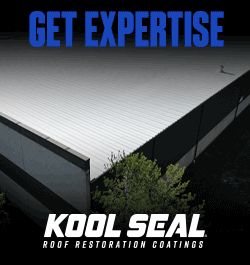





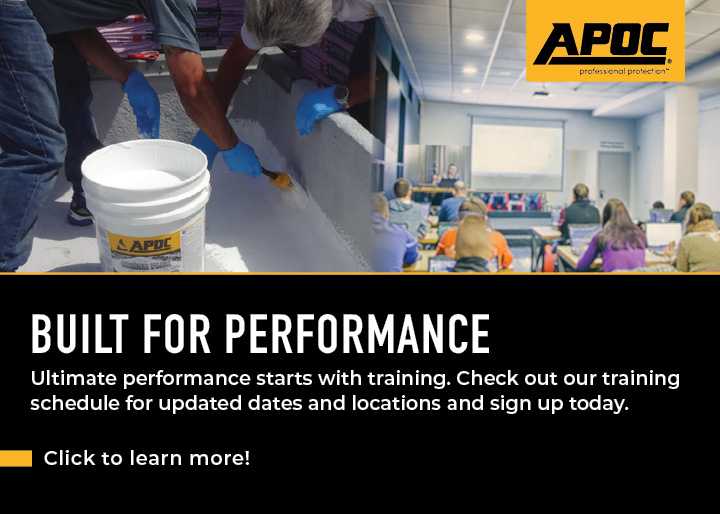



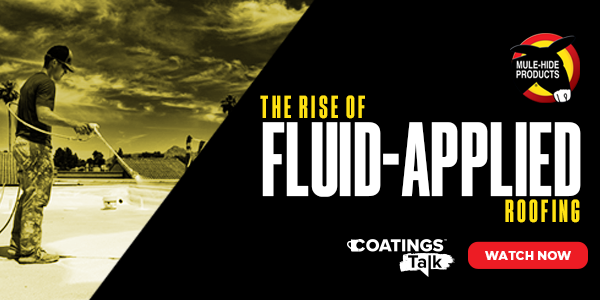


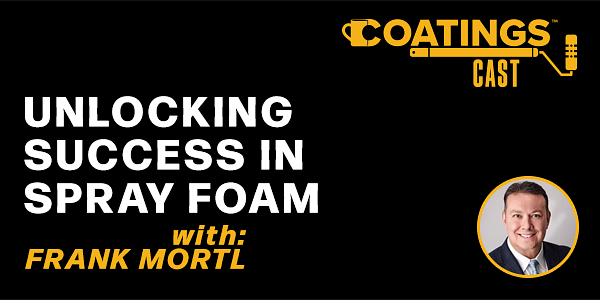


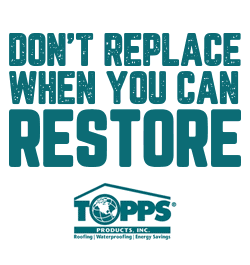


Comments
Leave a Reply
Have an account? Login to leave a comment!
Sign In